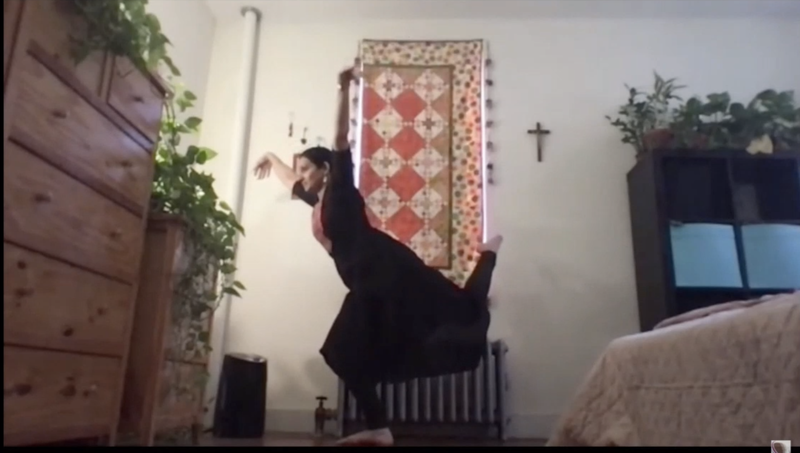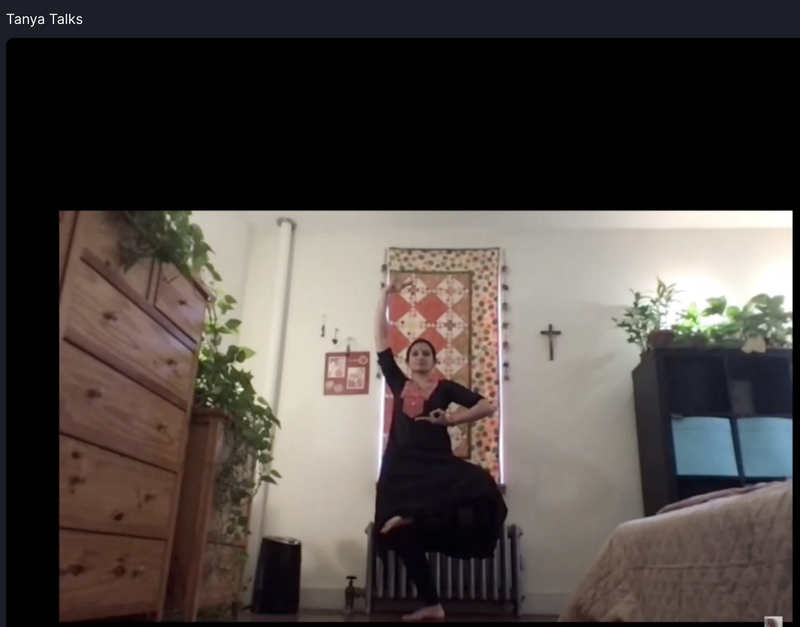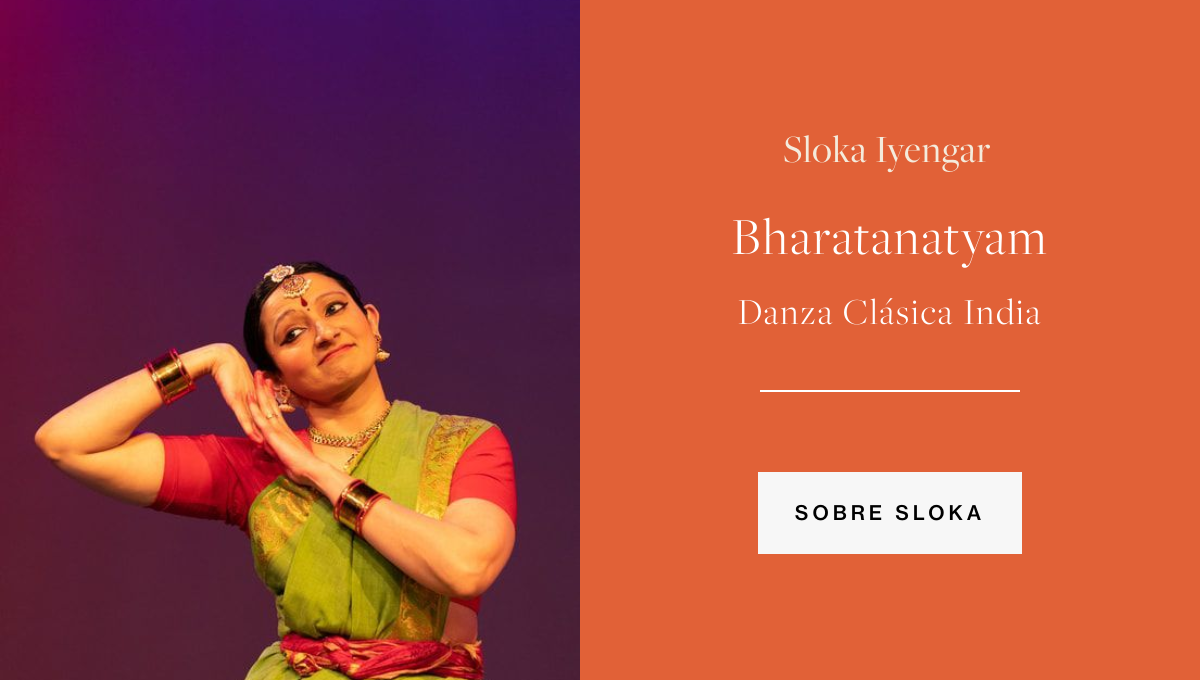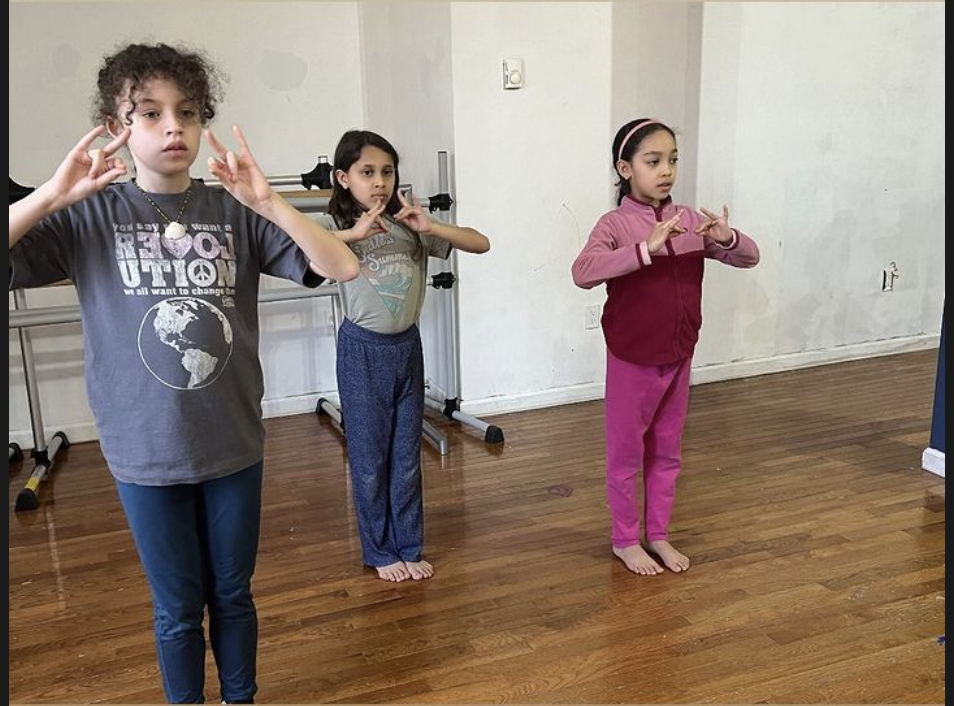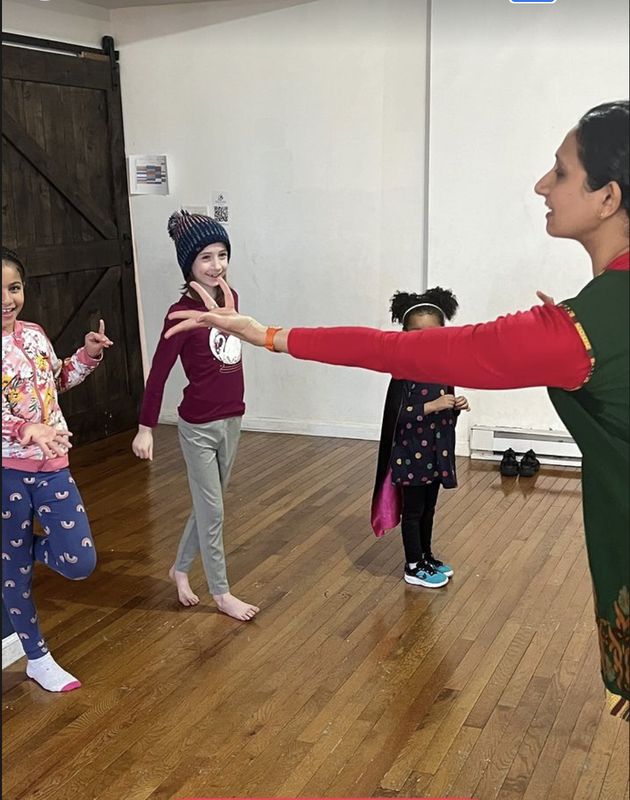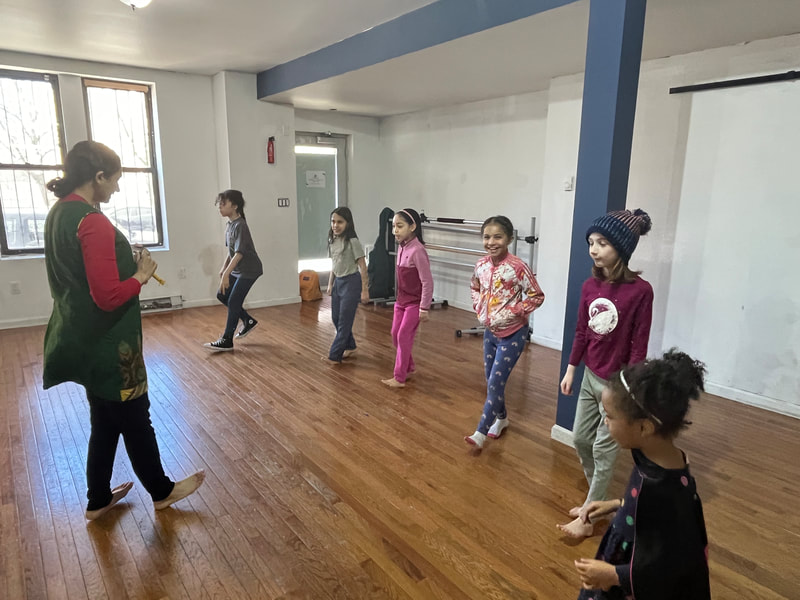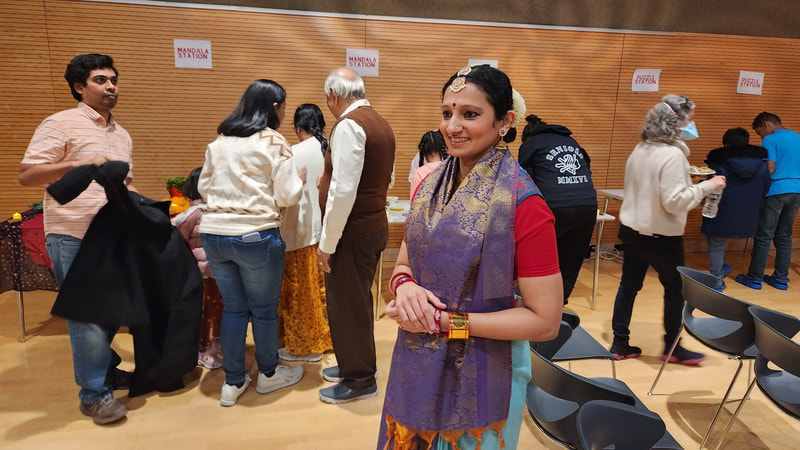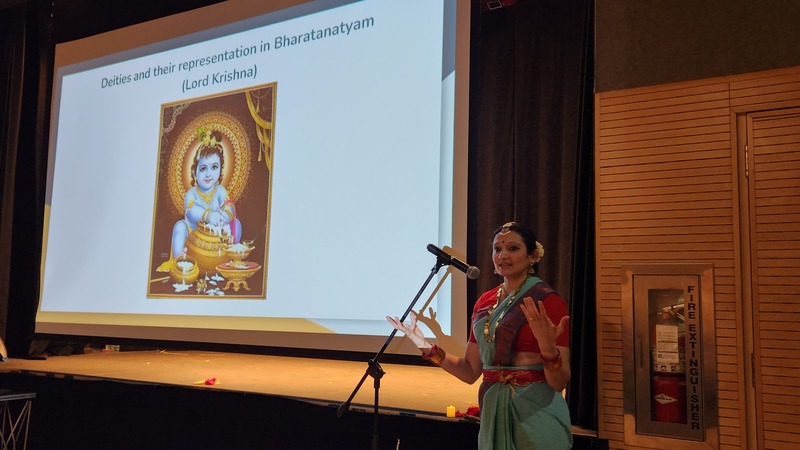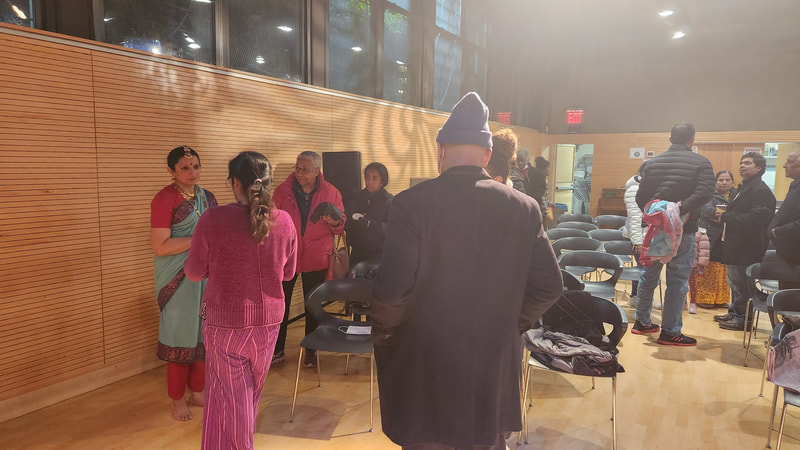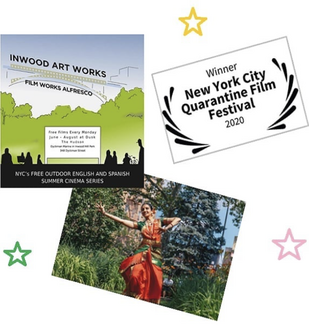Top image: At the Winter Garden festival in NYC. Picture credit: Purple Ganesh
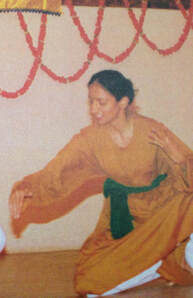 Performing "The Life of Jesus Christ"
Performing "The Life of Jesus Christ"
The convergence of Arts and Sciences
I learned Bharatanatyam as a child, and my interest in the nature of reality - how do we know what is real, does everyone experience the same reality, do animals know what is real, how do we know what we know – led me to study neuroscience in graduate school. Dancing as a scientist makes me realize how fortunate I am to experience both of these two very different, yet connected disciplines – science and art. Whereas science is the theoretical study of reality, dance to me is the practical study of reality. Together, science and dance help me to appreciate more fully the world we live in!
A few years ago, I taught summer school to high-school students in Harlem. My class had 25 students, and while all were eager to learn how the brain works, it was summertime, and everyone (including me!) wanted to be outside. I came up with activities we could do outdoors; one of them was using dance and music to explain synaptic plasticity – the process that explains how we learn new information. I performed a piece where the heroine – dripping with sarcasm - tells her lover that he’s late, and that he’d better not show up at all. I had a few reservations choosing this piece as I didn’t know if my students would be able to relate to the dance form. To my surprise and relief, the piece was a big hit! Not only did my students understand by my gestures what was going on, but they had questions of their own. Does the heroine take the lover back eventually? Does our hero come back with more appeals? And so on and so forth. After my piece, one student played the viola, and a few others performed hip-hop dance numbers. All this seamlessly led to discussions about how the brain allows us to do all that we do.
I learned Bharatanatyam as a child, and my interest in the nature of reality - how do we know what is real, does everyone experience the same reality, do animals know what is real, how do we know what we know – led me to study neuroscience in graduate school. Dancing as a scientist makes me realize how fortunate I am to experience both of these two very different, yet connected disciplines – science and art. Whereas science is the theoretical study of reality, dance to me is the practical study of reality. Together, science and dance help me to appreciate more fully the world we live in!
A few years ago, I taught summer school to high-school students in Harlem. My class had 25 students, and while all were eager to learn how the brain works, it was summertime, and everyone (including me!) wanted to be outside. I came up with activities we could do outdoors; one of them was using dance and music to explain synaptic plasticity – the process that explains how we learn new information. I performed a piece where the heroine – dripping with sarcasm - tells her lover that he’s late, and that he’d better not show up at all. I had a few reservations choosing this piece as I didn’t know if my students would be able to relate to the dance form. To my surprise and relief, the piece was a big hit! Not only did my students understand by my gestures what was going on, but they had questions of their own. Does the heroine take the lover back eventually? Does our hero come back with more appeals? And so on and so forth. After my piece, one student played the viola, and a few others performed hip-hop dance numbers. All this seamlessly led to discussions about how the brain allows us to do all that we do.
- Keeping with this theme, in December of 2021, I wrote this article for Sangath blog on the role of folk dance in maintaining positive mental health, and as a culturally-sensitive way of building and interacting with the community.
In February 2024, I worked with young children at The Dance Project of Washington Heights, an organization "working to remove barriers to dance education and build community through dance."
Below is a flyer and a few images (Image credit: Heather Godfrey).
Below is a flyer and a few images (Image credit: Heather Godfrey).

In October 2023, I presented a series of pieces at Project FIND in NYC.
"Project FIND’s mission is to provide low- and moderate-income and homeless seniors with the services and support they need to enrich their lives and live independently."
"Project FIND’s mission is to provide low- and moderate-income and homeless seniors with the services and support they need to enrich their lives and live independently."
In June 2023, Zara Lawler and I presented Sangam, a confluence of Indian Classical Dance and Western Classical Flute with at Abby's Lawn, NYC. This event was funded by Partnerships for Parks and their Capacity Fund Grant. In the videos below, you can see us engage the audience with flute music and movement with Llevo la musica!
Video credit: Gudrun Buhler (left) and David Frost (both Youtube videos)
Video credit: Gudrun Buhler (left) and David Frost (both Youtube videos)
|
|
|

Starting fall of 2022, going into summer of 2023, I have been chosen as artist-in-residence for Goddard Riverside- Community Arts Program. As part of this residence, I did a performance and community event on December 2, 2022.
Introduction to Indian Dance: An event for all ages where we will learn Bharatanatyam followed by a solo performance, with Indian crafts and food included.
An audience member, Dr. Pramod Suratkar noted:
"Thank you so much for a wonderful Friday evening of Indian Dance. I liked your introduction of Indian dances as an expression connecting spiritual, human and universal aspects through story telling using both body and mind. I hope the slides you showed gave the audience a glimpse into the vastness and depth of Indian Dance, classical and folk, and the spirit and meaning behind the vocabulary of gestures performers use which you explained beautifully.
Your Bharatanatyam pieces were delightful, educational and joyful. So, thanks a million Sloka for your effort and dedication to Bharatanatyam and other Indian dance forms."
Below are a few pictures that showcase the community building aspect of this event:
Introduction to Indian Dance: An event for all ages where we will learn Bharatanatyam followed by a solo performance, with Indian crafts and food included.
An audience member, Dr. Pramod Suratkar noted:
"Thank you so much for a wonderful Friday evening of Indian Dance. I liked your introduction of Indian dances as an expression connecting spiritual, human and universal aspects through story telling using both body and mind. I hope the slides you showed gave the audience a glimpse into the vastness and depth of Indian Dance, classical and folk, and the spirit and meaning behind the vocabulary of gestures performers use which you explained beautifully.
Your Bharatanatyam pieces were delightful, educational and joyful. So, thanks a million Sloka for your effort and dedication to Bharatanatyam and other Indian dance forms."
Below are a few pictures that showcase the community building aspect of this event:
At the end of my residency, I presented a recital called "Anant" Time and timelessness through Dance". Pictures from this event can be found here, and below is a testimonial from an audience member"
"Sloka took us on a journey of Bharatanatyam dance. Storytelling through exquisite rhythmic movements accentuated with dramatic eye and hand gestures. Not only is she a master of Indian Classical Dance but an educator as well, explaining in advance what we were about to experience. It brought cultural awareness, as well as an evening of beauty."
- Melanie Futorian, Futorian Dance Theatre, 2023
Another participant remarked: "You are indeed a most lovely poem. I thought the dance on loss and motherhood were especially powerful. I was moved to tears…"
"Sloka took us on a journey of Bharatanatyam dance. Storytelling through exquisite rhythmic movements accentuated with dramatic eye and hand gestures. Not only is she a master of Indian Classical Dance but an educator as well, explaining in advance what we were about to experience. It brought cultural awareness, as well as an evening of beauty."
- Melanie Futorian, Futorian Dance Theatre, 2023
Another participant remarked: "You are indeed a most lovely poem. I thought the dance on loss and motherhood were especially powerful. I was moved to tears…"
|
|
|
|
|
|
|
|
|

Building community thorough dance
The 20 residents of the nursing home on W76th Street where I recently performed had never seen Indian classical dance, and had never heard Indian classical music. As I started performing, a few residents started dancing using their walkers as support; some stood up swaying their hands, and others were bobbing their heads to the sound of centuries-old Carnatic music. Most were paying close attention to my hand gestures, footsteps and the facial expressions. This was a powerful moment for me. As a performer, I am used to dancing on stages, at black box theaters, and at film festivals. Most of the people that attend these events are able-bodied people that have had exposure of some kind to dance.
The reaction of the residents at the nursing home revealed again the transformative power of movement and music, and the need to bring arts to people that may not have access to it. This led me to develop SamyuktaNYC- an organization to bring the arts to underserved populations in NYC. Samyukta is a Sanskrit word that literally means ‘to come together’, and my mission is to bring artists and communities together.
The 20 residents of the nursing home on W76th Street where I recently performed had never seen Indian classical dance, and had never heard Indian classical music. As I started performing, a few residents started dancing using their walkers as support; some stood up swaying their hands, and others were bobbing their heads to the sound of centuries-old Carnatic music. Most were paying close attention to my hand gestures, footsteps and the facial expressions. This was a powerful moment for me. As a performer, I am used to dancing on stages, at black box theaters, and at film festivals. Most of the people that attend these events are able-bodied people that have had exposure of some kind to dance.
The reaction of the residents at the nursing home revealed again the transformative power of movement and music, and the need to bring arts to people that may not have access to it. This led me to develop SamyuktaNYC- an organization to bring the arts to underserved populations in NYC. Samyukta is a Sanskrit word that literally means ‘to come together’, and my mission is to bring artists and communities together.
I wanted to just thank you again for an amazing performance. The residents are still talking about how wonderful the show was. You have such an amazing gift and we thank you for sharing with us."
(Coordinator of a nursing home in NYC)


